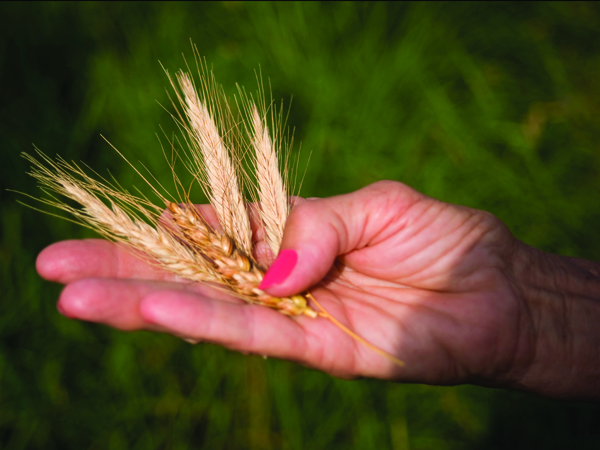 When it comes to flour, here are the basics: Soft wheat thrives in temperate, moist climates (like ours), while hard wheat flourishes in the Midwest. Soft wheat is milled into pastry flour, while hard wheat becomes bread flour. “All-purpose” flour—something Dave Poorbaugh of Daisy Organics stridently opposes on principle, arguing, “I don’t think many women buy all-purpose dresses”—is made from a combination of the two. (Poorbaugh did finally relent due to consumer demand; Daisy now sells all-purpose flour.)
When it comes to flour, here are the basics: Soft wheat thrives in temperate, moist climates (like ours), while hard wheat flourishes in the Midwest. Soft wheat is milled into pastry flour, while hard wheat becomes bread flour. “All-purpose” flour—something Dave Poorbaugh of Daisy Organics stridently opposes on principle, arguing, “I don’t think many women buy all-purpose dresses”—is made from a combination of the two. (Poorbaugh did finally relent due to consumer demand; Daisy now sells all-purpose flour.)
So, what separates these varieties? It’s all about protein—hard wheats have much higher protein levels, leading to more gluten and elasticity in the dough. This is the difference between two oppositional, and delicious, textures—chewy (high gluten) and flaky (low gluten).
Loaves made with bread flour have that familiar high, airy, chewy crumb, which raises the question: What did people in our region do before the 1850s, when hard wheat from the plains became readily available? They cooked with soft wheat, of course. That said, locally-produced flours from the 1700s and 1800s were slightly different from what we find around here today: Heritage soft wheats—something McGeary is currently cultivating in a pilot program—have slightly more protein content. “Even that small amount of protein will make a huge difference in the quality of the bread,” says Poorbaugh. And that’s not the only thing that distinguishes the heritage varieties: “Wheat around here is two-and-a-half feet tall,” he explains. “The heritage wheats are up to six feet tall.”
So, for a history lesson—and a tasty alternative—try baking traditional soft-wheat bread. It took plenty of trial and error to arrive at the recipe below, and Poorbaugh swears by it. “People expect really airy breads,” he explains. “The stuff at the grocery story is 50 percent air. We’ve all been indoctrinated into these high loaves. If you bake with our soft wheat bread, you get a nice, dense loaf. Try tearing a piece off and dipping it in your soup, or smearing a little apple butter on it.”
Click here for Daisy’s Soft Wheat Bread Recipe.


